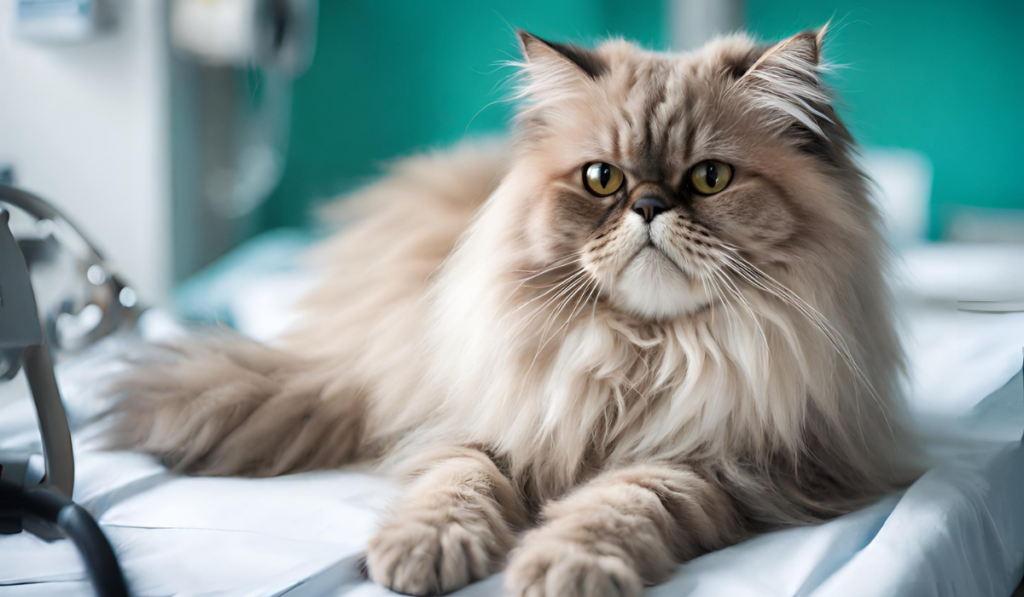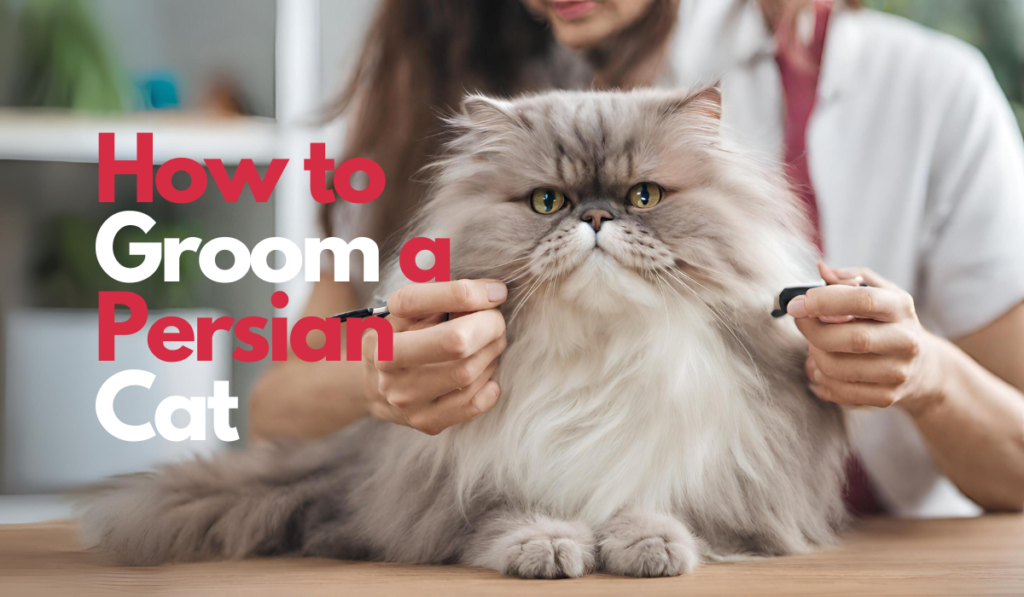Spaying is a surgical procedure that removes the ovaries and uterus of a female cat, preventing her from reproducing. Spaying has many benefits for both the cat and the owner, such as reducing the risk of certain diseases, preventing unwanted pregnancies and kittens, and reducing unwanted behaviors such as spraying, roaming, and aggression.
What are the Benefits of Spaying?

Spaying is a surgical procedure that removes the ovaries and uterus of a female cat, preventing her from reproducing. Spaying has many benefits for both the cat and the owner, such as:
- Reducing the risk of certain diseases, such as ovarian cancer, uterine cancer, mammary cancer, and pyometra (a life-threatening infection of the uterus).
- Preventing unwanted pregnancies and kittens can contribute to overpopulation and homelessness of cats.
- Reducing unwanted behaviors, such as spraying, roaming, and aggression, which are driven by hormones and mating instincts.
- Saving money and time on caring for pregnant cats, nursing cats, and kittens.
- Improving the lifespan and quality of life of your cat.
What are the Risks of Spaying?

Spaying is a surgical procedure that removes the ovaries and uterus of a female cat, preventing her from reproducing. Spaying has many benefits for the cat and the owner, but it also has some risks and complications that should be considered.
The risks of spaying include:
- Anesthesia: Any surgery that involves anesthesia has some risk of adverse reactions, such as allergic reactions, breathing problems, low blood pressure, or cardiac arrest. The risk is higher for older, overweight, sick, or pre-existing cats. Your veterinarian will perform a physical exam and blood tests before the surgery to assess your cat’s health and suitability for anesthesia.
- Bleeding: Spaying involves cutting blood vessels, which can cause bleeding during or after the surgery. The bleeding can be minor or severe, depending on the size and location of the vessels. Your veterinarian will use surgical techniques and tools to minimize the bleeding and monitor your cat closely for any signs of excessive blood loss.
- Infection: Spaying creates an open wound that can become infected by bacteria or other microorganisms. The infection can affect the incision site, the abdominal cavity, or the bloodstream. Your veterinarian will use sterile instruments and gloves, clean the surgical area, and prescribe antibiotics to prevent infection.
- Wound dehiscence: This is a condition in which the incision site reopens or splits apart, exposing the underlying tissues and organs. It can happen if the stitches or staples are removed too early, if the cat licks or bites the wound, or if the cat is too active after the surgery. Your veterinarian will advise you on how to care for the wound and prevent it from opening.
- Urinary incontinence: This is a condition where the cat loses control over her bladder and leaks urine involuntarily. This can happen if the spaying damages the nerves or muscles that control urination or alters the hormone levels that affect bladder function. Your veterinarian will check your cat for any signs of urinary problems before and after the surgery and prescribe medication or other treatments if needed.
When To Spay A Cat? at What Best Age?
Spaying is a surgical procedure that removes the ovaries and uterus of a female cat, preventing her from reproducing. Spaying has many benefits for both the cat and the owner but also requires some planning and timing.
The best age to spay a cat depends on several factors, such as the health, breed, lifestyle, and preference of the cat and the owner. However, most veterinarians agree that the best time to do it is before a cat’s first heat cycle, which can occur as early as 4 months of age. This can reduce the risk of certain diseases, such as mammary cancer and pyometra, and prevent unwanted pregnancies and kittens.
Typically, the following three options are recommended:
- Early or pediatric spay/neuter, done at six to eight weeks of age. This is usually done in animal shelters or rescue groups to sterilise all cats before adoption. It is safe and effective and may have some advantages, such as faster recovery, less stress, and less bleeding. However, it may also have disadvantages, such as an increased risk of urinary tract infections, obesity, or orthopaedic problems.
- Standard spay/neuter, done at five to six months of age. This is the most common option for pet owners who want to spay their cats before they reach sexual maturity. It is also safe and effective and may have some advantages, such as a lower risk of complications, less anaesthesia time, and less post-operative care. However, it may also have disadvantages, such as higher costs, longer recovery time, and more pain.
- As adults, in cats that were not spayed/neutered because they were previously strays, feral, breeding animals, or otherwise. This option is still possible and beneficial for cats of any age. Still, it may have some challenges, such as a higher risk of complications, longer anaesthesia time, more post-operative care, and more pain. It may also not prevent or reverse some diseases or behaviors already developed due to hormones.
How Much Does It Cost to Spay a Cat in India?
Spaying is a surgical procedure that removes the ovaries and uterus of a female cat, preventing her from reproducing. Spaying has many benefits for both the cat and the owner, but it also has some costs that should be considered.
The cost of spaying a cat can vary depending on the location of the veterinary clinic, the type of anesthesia used, the size and age of the cat, and the post-operative care required. It is best to check with local veterinary clinics to get an estimated cost. On average, spaying a female cat can cost anywhere from Rs. 1,500 to Rs. 5,000.
Some factors that can affect the cost of spaying a cat are:
- The location of the veterinary clinic: Some clinics may charge more or less depending on their location, reputation, facilities, and staff. For example, clinics in urban areas may charge more than clinics in rural areas due to higher overhead costs.
- The type of anesthesia used: Some clinics may use general anesthesia, which makes the cat unconscious and pain-free during the surgery, while others may use local anesthesia, which numbs only the surgical area. General anesthesia is more expensive and requires more monitoring than local anesthesia, but it may also reduce the risk of complications and stress for the cat.
- The size and age of the cat: Larger and older cats may require more anesthesia and surgical time than smaller and younger cats, which can increase the cost of the procedure. However, spaying younger cats (between 4 and 6 months) can also reduce the risk of certain diseases and complications later in life.
- Post-operative care is required: After the surgery, your cat may need pain medication, antibiotics, wound dressing, stitches or staples removal, follow-up visits, and exceptional food or supplements. These can add to the cost of spaying your cat.
Spaying your cat is a responsible and beneficial decision that can improve her health and well-being. However, it is also essential to consider the cost of spaying your cat and plan accordingly. By comparing different veterinary clinics and options, you can find the best value for your money and ensure a smooth and successful spaying experience for you and your cat.
How To Take Care of a Spayed Cat
Spaying is a standard and safe procedure, but it does require some preparation and care. Here are some steps to follow before, during, and after spaying your cat.
Before Spaying a Cat
- Choose a reputable veterinarian who has experience in spaying cats. Ask for recommendations from friends, family, or other cat owners, or look for online reviews and ratings.
- Schedule the spaying appointment when your cat is healthy and not in heat. Spaying during heat can increase the risk of bleeding and complications. The ideal age for spaying is between 4 and 6 months before the first heat cycle.
- Follow the pre-operative instructions given by your veterinarian. This may include fasting your cat for 12 hours before the surgery, withholding water for a few hours before the surgery, and bringing your cat in a secure carrier with a blanket or towel.
- Discuss with your veterinarian any questions or concerns about the procedure, such as the anesthesia, the recovery time, the cost, and the possible risks and complications.
During Spaying a Cat
- The spaying procedure usually takes about an hour, depending on the size and age of your cat. Your cat will be given general anesthesia to make her unconscious and pain-free during the surgery.
- The veterinarian will make a small incision in your cat’s abdomen and remove the ovaries and uterus. The incision will be closed with stitches or staples, which may be dissolvable or need removal later.
- Your cat will be monitored closely after the surgery until she wakes up from the anesthesia. She may be given pain medication and antibiotics to prevent infection.
After Spaying a Cat
- Your cat must stay at the veterinary clinic for a few hours or overnight, depending on her condition and the veterinarian’s recommendation. You will be given post-operative instructions on how to care for your cat at home.
- Keep your cat in a quiet, comfortable place away from other pets and children. She may be groggy, sleepy, or disoriented for a day or two after the surgery. Check on her regularly and ensure she has access to fresh water and food.
- Prevent your cat from licking or biting the incision site, which can cause infection or open the wound. You may need to use an Elizabethan collar (a cone-shaped device that fits around your cat’s neck) or a surgical suit (a garment that covers your cat’s body) to protect the incision.
- Follow the veterinarian’s advice on when to resume normal activities with your cat. Avoid strenuous exercise, jumping, or climbing for at least 10 days after the surgery. Keep your cat indoors until she is fully healed.
- Watch for any signs of complications, such as bleeding, swelling, redness, discharge, fever, loss of appetite, vomiting, diarrhea, or lethargy. Contact your veterinarian immediately if you notice any of these symptoms.
Spaying your cat is a responsible and beneficial decision that can improve her health and well-being. By following these steps, you can ensure a smooth and successful spaying experience for you and your cat.
How Long Does It Take for a Cat to Recover from Spaying?
Spaying is a surgical procedure that removes the ovaries and uterus of a female cat, preventing her from reproducing. Spaying has many benefits for both the cat and the owner, but it also requires some recovery time.
The recovery time for a spayed cat can vary depending on several factors, such as the cat’s age, overall health, and the type of surgery performed. In general, however, most female cats will take around **10 to 14 days** to fully recover from being spayed.
When to Not Spay a Cat?

Spaying is a surgical procedure that removes the ovaries and uterus of a female cat, preventing her from reproducing. Spaying has many benefits for both the cat and the owner, such as reducing the risk of certain diseases, preventing unwanted pregnancies and kittens, and reducing unwanted behaviors.
However, there may be some situations when spaying a cat is not recommended or should be postponed. Here are some examples:
- When the cat is too young or too old. Healthy cats as young as 8 weeks old can be spayed safely, but some veterinarians may prefer to wait until the cat is 4 to 6 months old . On the other hand, older cats can also be spayed, but they may need more pre-operative tests and post-operative care to ensure their safety and well-being.
- When the cat is in heat or pregnant. Spaying a cat in heat or pregnant can increase the risk of bleeding and complications during and after the surgery. It is best to schedule the spaying appointment when the cat is not in heat or pregnant or wait until after she gives birth and weans her kittens.
- When the cat has a medical condition that makes anesthesia or surgery risky. Some cats may have health problems that make them unsuitable for spaying, such as heart disease, kidney disease, diabetes, obesity, or infection. Your veterinarian will perform a physical exam and blood tests before the surgery to assess your cat’s health and suitability for spaying. If your cat has a medical condition that makes spaying risky, your veterinarian may advise you to delay or avoid the surgery or refer you to a specialist.
- When the cat is intended for breeding or showing. Some cat owners may want to keep their cats intact for breeding or showing. However, this decision should be made carefully and responsibly, considering the welfare of the cats and the kittens involved. Breeding and showing cats require a lot of time, money, and commitment, and there are many ethical and legal issues to consider. If you are not planning to breed or show your cat, spaying her as soon as possible is better.
Spaying your cat is a responsible and beneficial decision that can improve her health and well-being. However, it is also essential to consult your veterinarian to determine the best time and option for spaying your cat. Doing so can ensure a smooth and successful spaying experience for you and your cat.







